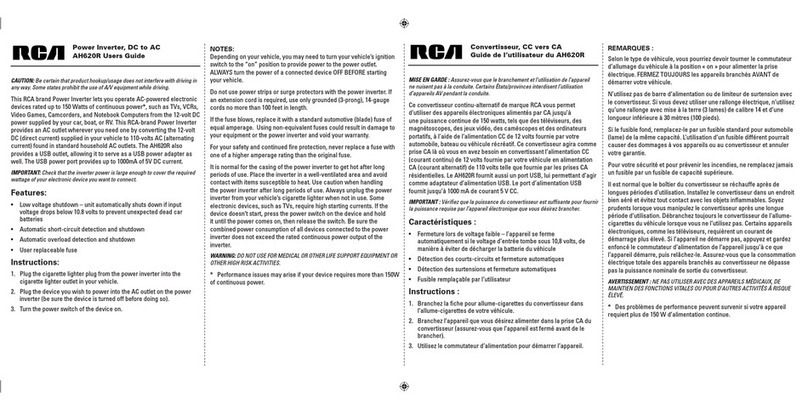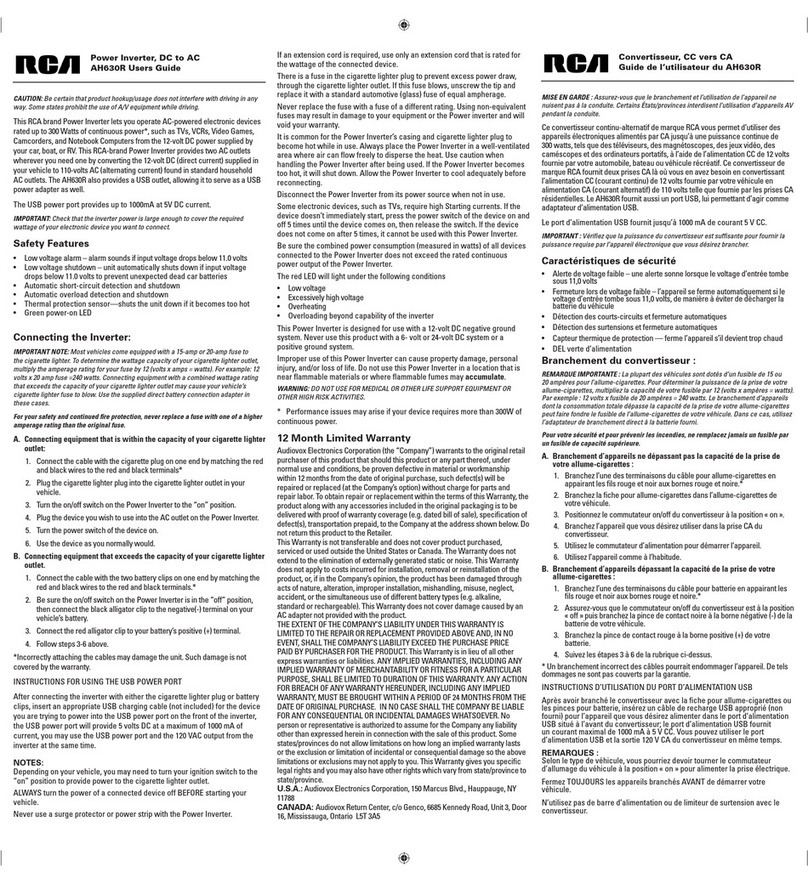RCA Crystal-Calfbrared Marker Generator WR·99A
oIIt.(O§
0
0:0
0
RF ATTENUATION-Uti·
lizes frye slide switches to
provide step attenuation of
the rf-output signal. When
the slide switches are placed
in their "down" positions, attenuation in steps of IS,
10, or S db is provided. When the switches are set to
their "up" or "out" positions, no attenuation occurs.
Because the attenuation provided by each switch is
additive, the switches may be used to provide attenua-
tion in any amount from zero to 60 db.
RF IN-External
rf
signal is
fed in here when the WR·
99A is used as a heterodyne
frequency meter. This ter-
minal connects to the
rf
de-
I
I
tector. When an external signal is beat with the vfo or
1· or IO·Mc oscillator signal from the WR·99A, an
audio beat note will be heard from the loudspeaker.
AF GAIN·POWER OFF-
Turns power off when set to
"POWER OFF" position; in-
creases volume level from
loudspeaker when turned
clockwise.
MOD IN-External modula-
tion signal to be superim-
posed on the rf output from
the WR-99A is fed into this
terminal. The MOD IN ter-
I·
minal connects directly to the internal modulator stage.
When the RF ON-OFF control is set to "OFF" and the
CAL/MOD control is set to "600
"V",
the internal
600·cps signal is available separately at this terminal.
I I
CAL/MOD-Selects type of
modulation applied internally
o
0 00 0 0
0
§
or externally to the rf-output
o
0
E
o._
signal or made available at
t=:======-=-""'=::;r"'"
the output terminal. When
this control is set to "OFF", no modulation is applied.
When set to one of the seven remaining positions,
modulation is as given below. NOTE: With the RF
ON-OFF control set to "OFF", any type of modula-
tion except "600""\.,", is available at the OUTPUT
connector.
"10 MC CAL"-Crystal-controlled audio calibrat-
ing beats are provided at 10-Mc intervals at fre-
quencies which are multiples of 10 Mc throughout
the tuning range of the WR·99A. Makes possible
precise calibration of the variable-frequency oscilla-
tor from 20 to 260 Mc.
·5·
"1 MC CAL"-Audio calibrating beats are pro-
vided at I·Mc intervals at frequencies which are
multiples of 1 Mc throughout the tuning range of
the WR-99A. Makes possible calibration of the
variable-frequency oscillator from 20 to 260 Mc.
"1 MC
&
EXT CAL"-When a crystal or L-C
circuit is plugged into the socket at the rear of the
instrument, the external unit can be synchronized
with the I-Mc internal oscillator to give calibrating
markers at intervals of less than 1 Mc.
An
audio
beat signal will be heard from the speaker. NOTE:
The crystal frequency must be at least 1 Mc or
higher.
"EXT CAL"-When an external 1- to 30-Mc
fundamental-frequency crystal is plugged into the
socket at the rear of the instrument, the WR-99A
will give harmonic output at frequencies which are
multiples of the crystal frequency.
"4.S MC MOD"-When the WR-99A is tuned to
any frequency from 20 to 260 Mc, the 4.S-Mc modu-
lation will appear as dual markers spaced exactly
4.S Mc away from the vfo marker on a sweep-re-
sponse curve. When the WR-99A is tuned to a pic-
ture-carrier frequency, the 4.S-Mc modulation will
mark the sound-carrier frequency, or vice versa, on
the response curve. NOTE: The 4.S-Mc markers
cannot be heard as audio beats.
"4.S MC
&
600 '\., MOD"-AppJies both 4.S-MC
and 6OO-cpsmodulation to the output signal. When
the RF control is set to "OFF" and the CAL/MOD
control is set to "4.5 MC
&
600~MOD", only these
two modulating frequencies are available at the
OUTPUT connector. This type of output is desirable
for use in aligning sound-if amplifiers and FM
detectors.
"6OO'"V MOD"-lmposes 600-cps audio modula-
tion on the rf-output signal. When the output is
tuned to the frequency of a TV picture carrier or
picture intermediate frequency, the WR·99A may be
used to produce approximately 6 to 11 horizontal
bars on the picture-tube screen for checking vertical
linearity. The 600-cps modulation is also used to
align FM detectors by the "zero signal" method.
•I
o
o
0'
t~
GND-connects directly to
chassis ground and case.
00000
O-
o~o































